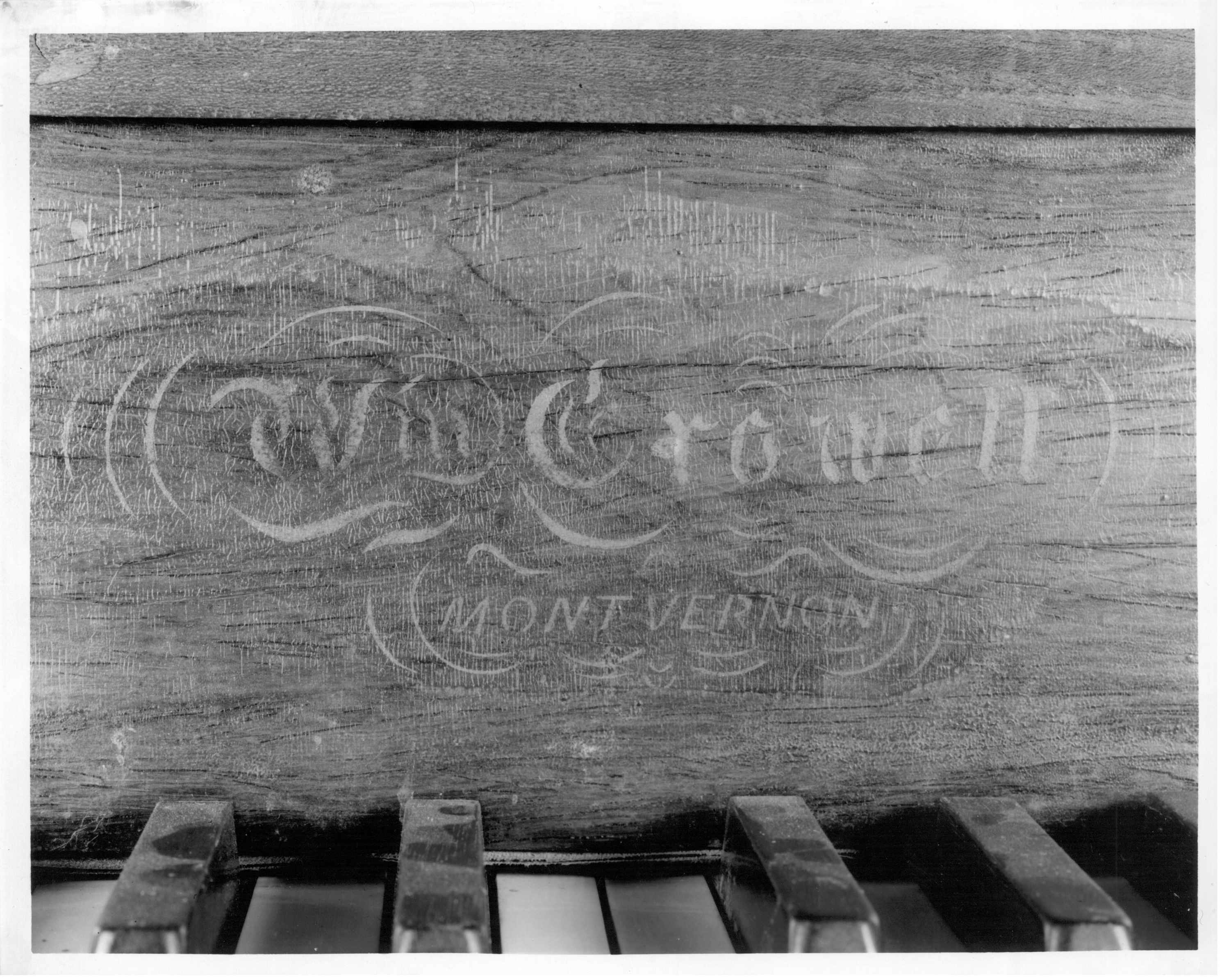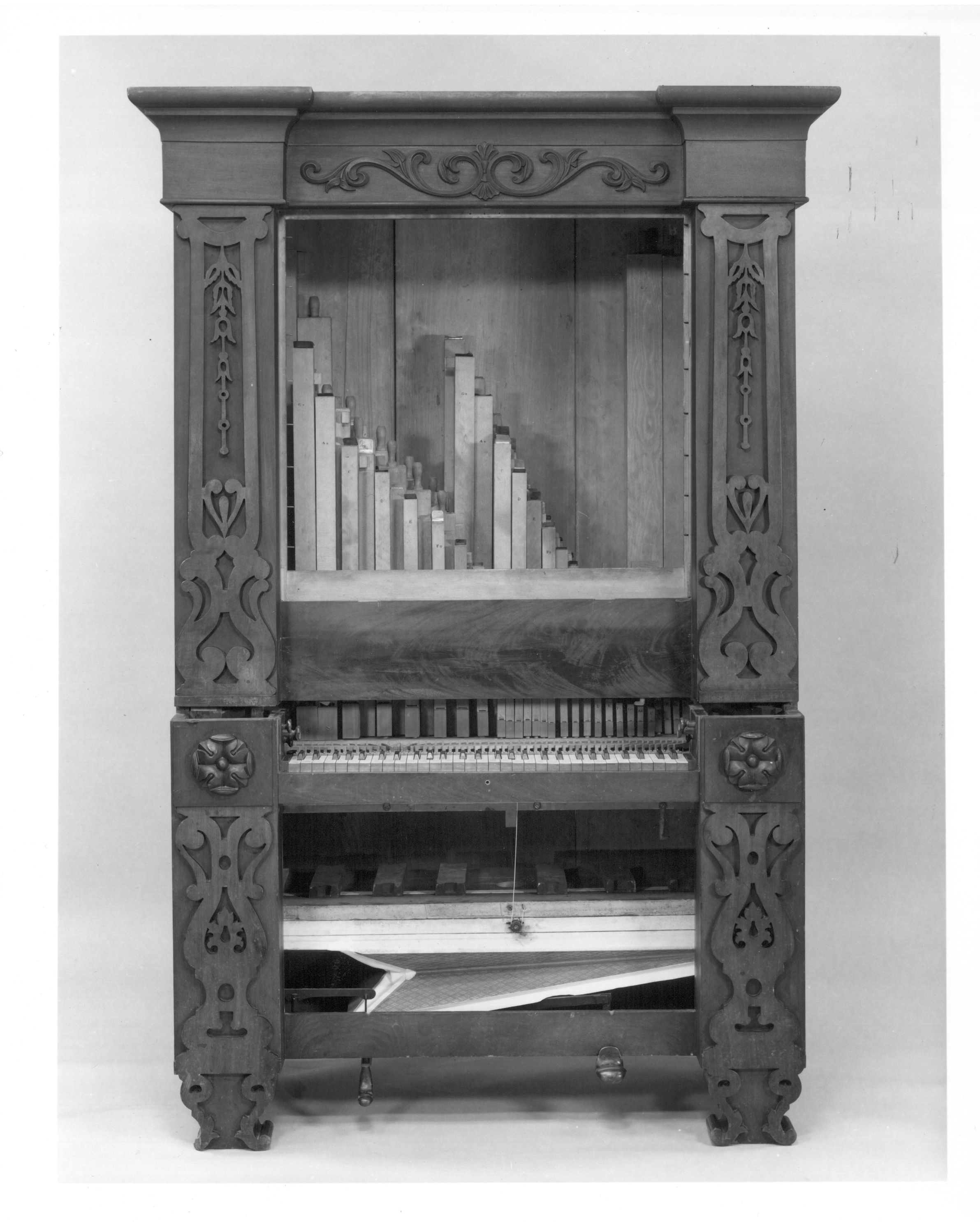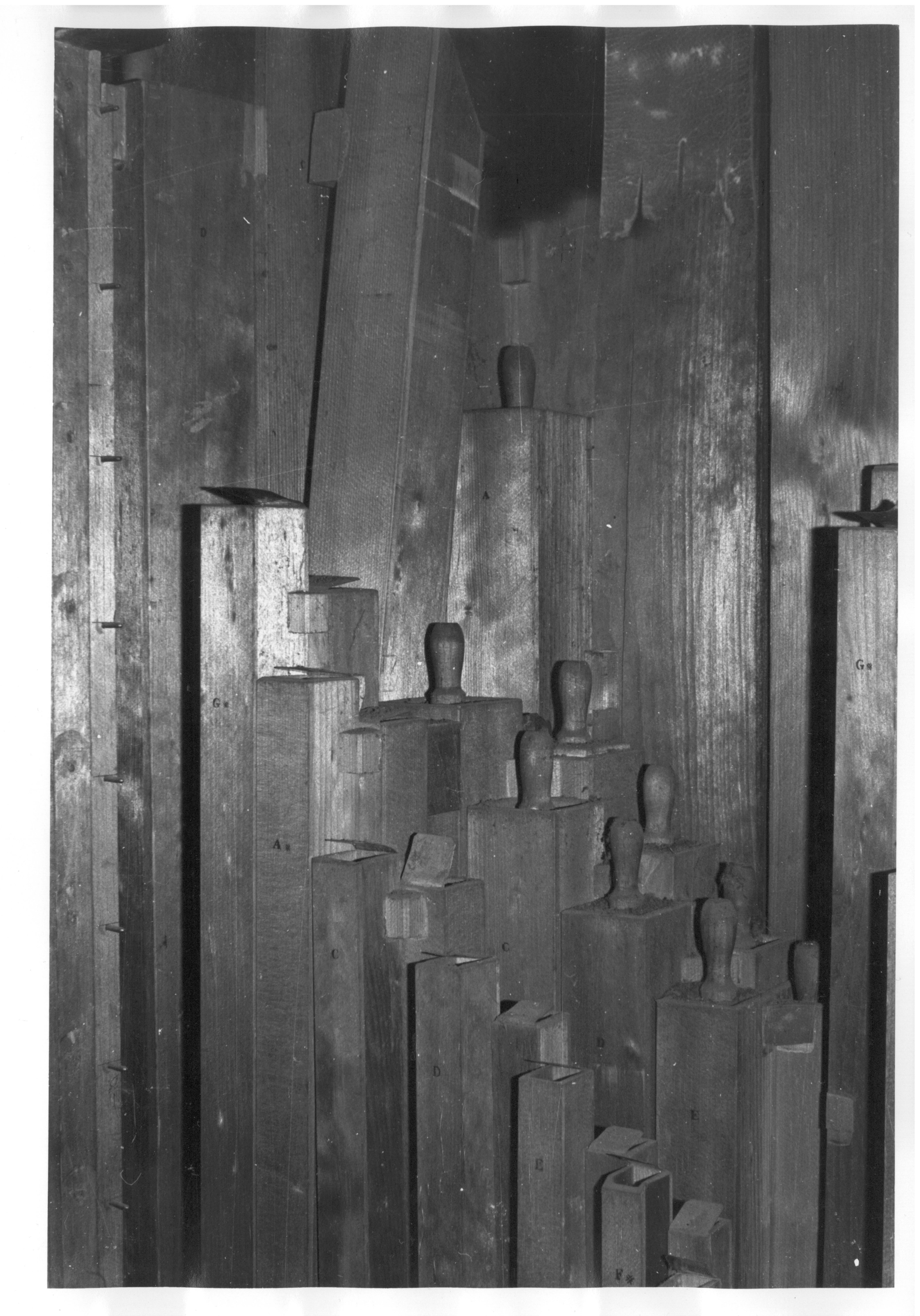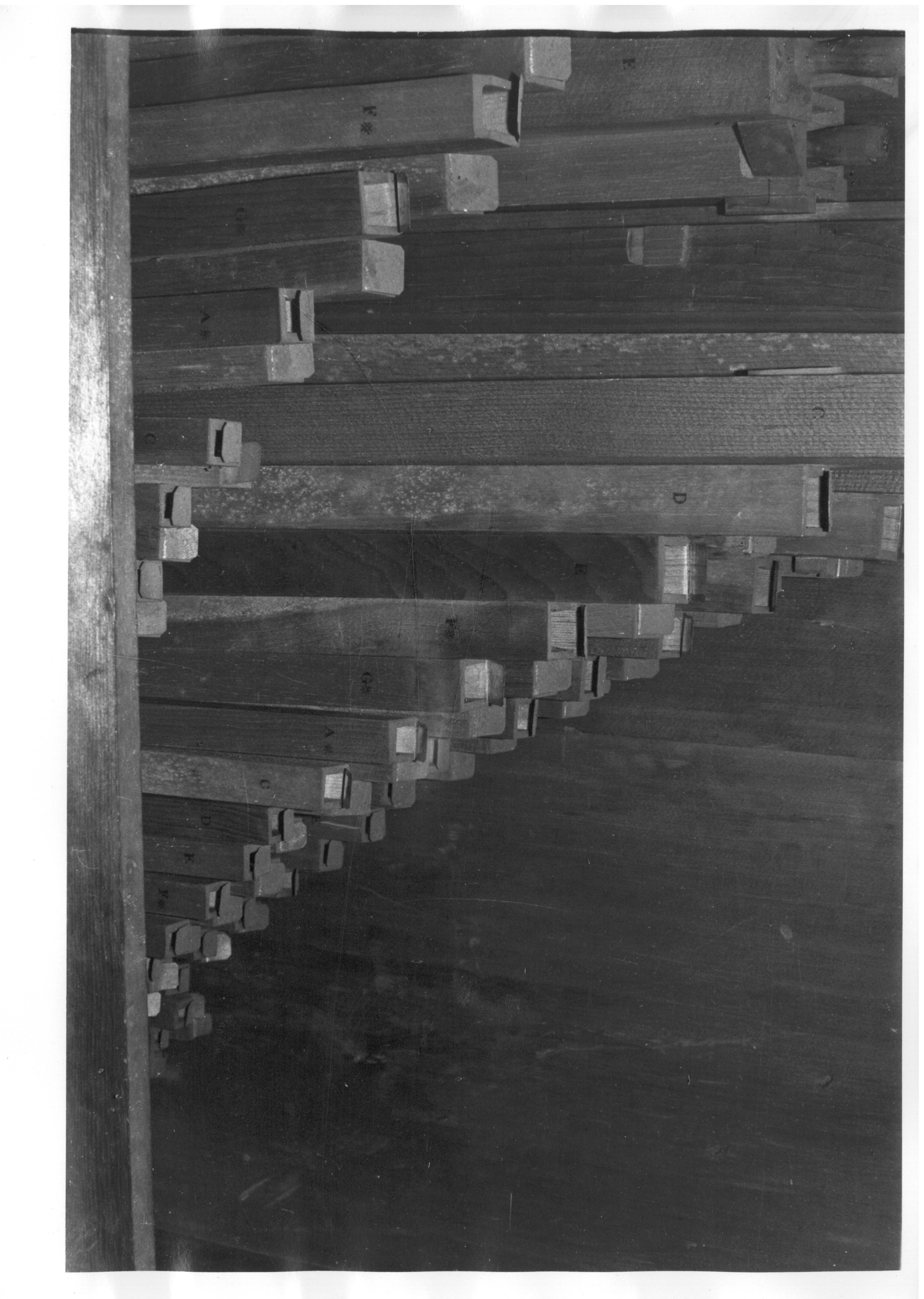Chamber Organ
William Crowell American
Not on view
The chamber organ is a moderately-sized piped organ. It typically has a single manual, a limited number of stops, and a limited pedalboard or no pedals at all. It is generally intended for use in small chapels, in homes, or other intimate rooms. As it is capable of long sustained tones, it is sometimes preferable to harpsichord as a continuo instrument in chamber ensembles.
Such instruments might also be used in small churches, like those found in small towns and villages throughout the United States in the nineteenth century. Chamber organs were largely usurped by reed organs after the middle of the century.
The builder of this chamber organ, William Crowell, along with his brother Samuel, were members of a small community of around half a dozen organ builders in Mont Vernon, New Hampshire whose work was all closely related. This beautiful chamber organ has elements of both Empire and Roccoco design styles.
Technical description: Cabinet of Honduras mahogany with side panels of American walnut, 207cm high, 136.5 cm wide, 71.5 cm in depth: nameboard of Brazilian rosewood on vertical grain softwood; all pipes enclosed in swell box, the horizontal shutters of which are concealed behind a cloth-backed mahogany grille; shutters controlled by left foot pedal; tracker connecting shutters held up by spring; no hitch-down; one manual of 58 notes, range C-a3, ivory naturals, ebony accidentals, wood backfalls, each having a wire fulcrum and guide, rest on key tails and depress pallets by means of wood stickers 65 mm long, three mm Diameter: keyfall and palletfall four mm; pallets glued up from stock five and nine mm thick, the wider piece faced with single layer of sheep leather and seated against grid bottom; leather tails glued to grid 57 mm high and faced with paper or parchment on the lower surface, the paper also sealing grid bottom outside the pallet box; no sponsels between ribs on grid bottom; channels 308 mm long, approximately 10 mm, 19 mm and 12 mm wide for first, second and third c's respectively; chest approxroximate keyscale from g above middle c to top a3; single large toeboard 20 mm thick; wind provided by single diagonal feeder pumped by player's right foot; double fold reservoir above feeder, both folds inwards; six metal weights resting on top board of reservoir; wind trunk to chest 45 x 50 mm inside.
Six Brazilian rosewood stops, one at lower left bearing paper label covered with celluloid-like disk reading "Principal Bass"; other unlabeled stops could read, top to bottom, left: "Diapason Bass," "Dulcianan Treble," right: " Diapason Treble," "Principal Treble," and "Fifteenth Treble"; compass of the Fifteenth c1-c3 (25 notes); bass/treble division between c and middle c; Diapason and Dulciana 8', principal 4', Fifteenth 2'; pine pipes, with caps of western red cedar set slightly below block tops; windways cut in caps (English-style voicing); C-f (18 pipes) of Diapason Bass stopped, the upper lip cut in the outside of the front wall; upper lip of scale is that of a quite narrow principal, smaller than that of usual turn of the century larger open pipes cut in the inside; smaller open pipes (from about e above 1' c in the Diapason Treble) have front wall beveled to form lip, no ears; all upper lips sharp; cutup and block dimensions of the first two c's of the Diapason Bass are 16 mm, and 101 x 87 for C; 10 mm and 54 x 49 for c; scales for open pipes in all stops almost identical within woodworking tolerances: 4' c 64 x 51 mm; 2' c 35 x 25 mm; 1' c 19 x 14 mm; 1/2' c 13 x 9 mm; 1/4' c 8 x 6.5 mm; 1/8' c 5 x 4 mm scale is that of a quite narrow Principal, smaller than that of usual turn of the century Melodia; cutup of open 4' pipe is 12 mm. Cutups of open 2' pipes are three mm for Diapason, two for Dulciana, and one for Principal; smaller pipes in all stops have cutups of approximately one mm which are unusually low and indicate a light wind pressure of 2" or less, and a delicate singing tone. (Jeremy Cooper, 1977)
Due to rights restrictions, this image cannot be enlarged, viewed at full screen, or downloaded.
This artwork is meant to be viewed from right to left. Scroll left to view more.







